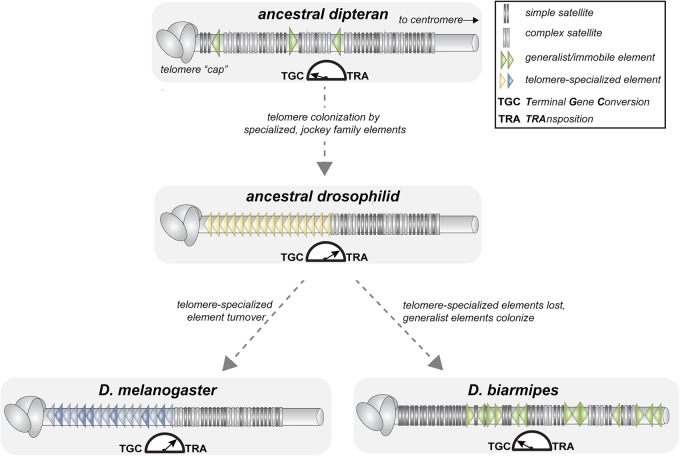Figure 5.
Model of telomere elongation mechanism evolution pre- and postbirth of the genus Drosophila. The dipteran ancestor of Drosophila encodes neither telomerase nor telomere-specialized mobile elements. Instead, a recombination-based mechanism, “terminal gene conversion,” likely lengthens the repetitive DNA. Exclusive chromosome-end insertions by a jockey family element becomes the primary, Drosophila-wide telomere elongation mechanism. Major jockey family lineages turn over across Drosophila species that retain this lengthening mechanism (bottom left). In species like D. biarmipes, the loss of telomere-specialized elements, and the presence of “generalist” mobile elements, illustrates how some Drosophila species may revert to the ancestral, predominantly recombination-based telomere lengthening mechanism (bottom right).

